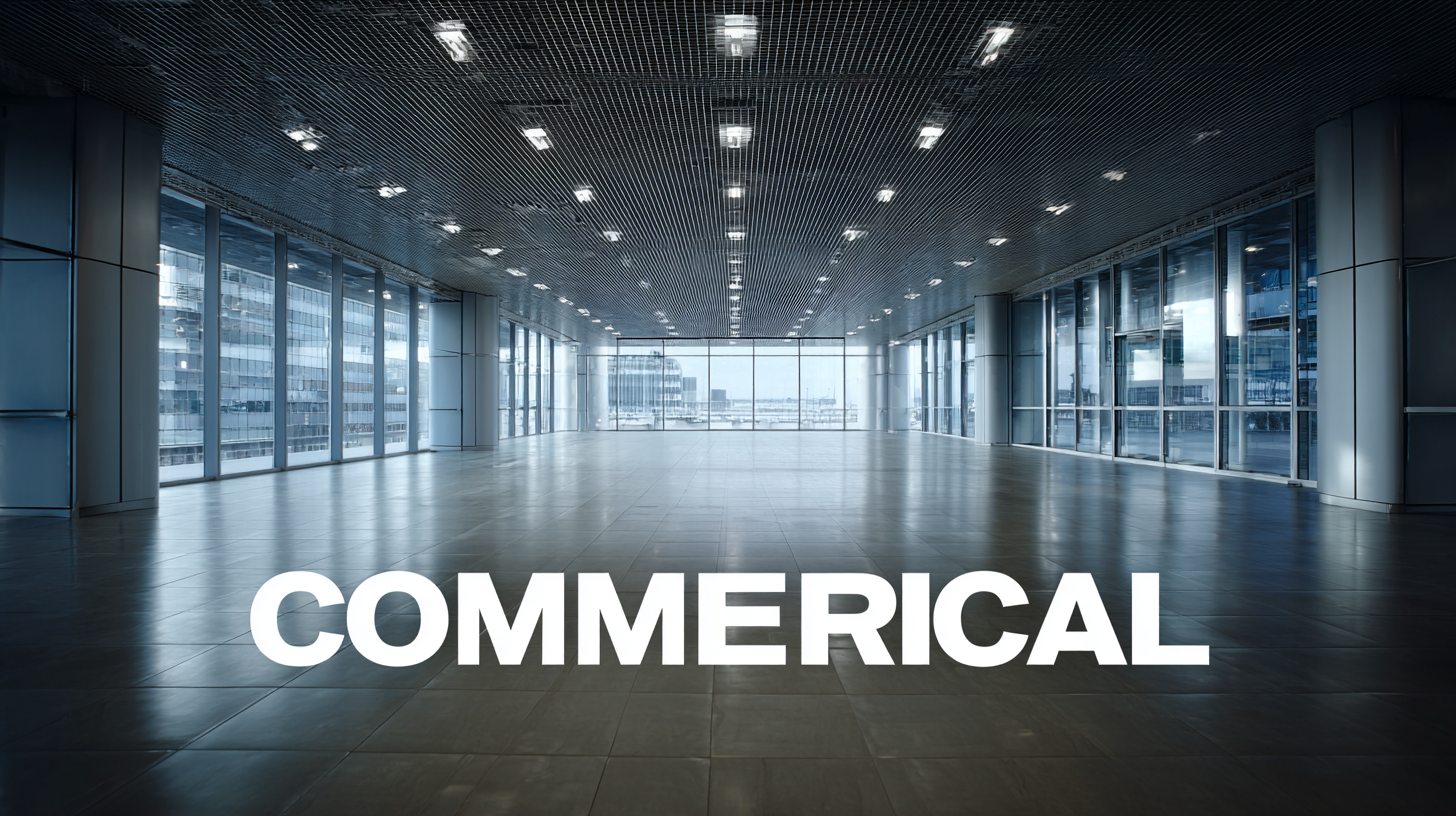
In today's competitive business landscape, the choice of lighting solutions plays a crucial role in enhancing operational efficiency and creating an inviting atmosphere. Commercial LED lighting has emerged as a preferred option for businesses, driven by its energy efficiency, longevity, and reduced maintenance costs. According to the U.S. Department of Energy, switching to LED lighting can cut energy use for lighting by 50% or more, showcasing the significant cost savings available to businesses. Moreover, a report by the Lighting Research Center indicates that proper lighting can improve employee productivity by up to 25%. This highlights not only the economic advantages but also the potential for better workplace environments through quality lighting. As businesses continue to prioritize sustainability and cost-effectiveness, understanding the key benefits of choosing the best commercial LED lighting options becomes essential for long-term success.

The impact of LED lighting on energy efficiency for commercial spaces is substantial and transformative. According to the U.S. Department of Energy, LED lights use at least 75% less energy and last 25 times longer than incandescent lighting, making them a smart choice for businesses looking to reduce utility costs. Transitioning to LED lighting can result in energy savings of up to 50% to 70% in commercial environments, particularly in settings where lights are used for extended hours.
To maximize energy efficiency, businesses should consider investing in smart lighting systems that include features such as occupancy sensors and dimming controls. These systems automatically adjust lighting based on occupancy and natural light levels, which not only enhances energy savings but also extends the life of the lighting fixtures.
Additionally, it's wise to choose LED fixtures that are specifically designed for commercial applications. Look for Energy Star-rated products, which ensure a standard of energy efficiency and reliability. Implementing these strategies can significantly enhance your business's sustainability profile while decreasing overall operational costs.
In the ever-evolving landscape of commercial spaces, enhancing aesthetics plays a pivotal role in attracting customers and fostering a welcoming environment. Quality commercial LED lighting stands out as a transformative element in this regard. By embracing advanced LED technology, businesses can create a vibrant and inviting ambiance that significantly influences consumer behavior. Reports indicate that the global artificial Christmas tree market is projected to grow from $243.9 million in 2025 to $185.22 million by 2033, reflecting a 3.5% growth rate. This highlights the increasing consumer preference for aesthetically pleasing holiday decorations, which is often enhanced by superior lighting solutions.

Moreover, the glass tableware market is anticipated to reach $887.34 million by 2033, up from $53.36 million in 2025. Such growth underscores the importance of presentation and the role that lighting plays in elevating the overall dining experience. Strategic use of quality LED lighting can accentuate the elegance of glassware, making them more visually appealing to customers. As businesses invest in these lighting solutions, they not only improve aesthetics but also enhance overall customer engagement, driving both sales and brand loyalty in an increasingly competitive marketplace.
When businesses consider upgrading their lighting systems, the long-term financial benefits of LED technology cannot be overlooked. According to a report by the U.S. Department of Energy, LED lighting can save businesses up to 75% on energy costs compared to traditional incandescent lighting. This significant reduction in energy consumption not only translates to lower monthly bills but also contributes to a decrease in overall energy demand, reducing the company's carbon footprint.
Moreover, the longer lifespan of LED fixtures further enhances cost savings. According to the Energy Saving Trust, the average lifespan of LED lamps is about 25,000 to 50,000 hours, compared to just 1,000 hours for incandescent bulbs. This longevity means that businesses spend less on replacements and maintenance, allowing them to allocate those funds to other important areas. In fact, a study by the LED Lighting Alliance estimated that switching to LEDs could save a medium-sized business upwards of $1,000 annually, showcasing an impressive return on investment over time. As businesses increasingly seek sustainable and efficient solutions, the financial advantages of LED lighting are becoming a key driver in their decision-making processes.
This chart highlights various key benefits of opting for the best commercial LED lighting for businesses. Each benefit is scored on a scale from 1 to 10 based on its significance, showcasing how LED technology not only reduces costs over time but also enhances overall operational efficiency and environmental responsibility.
Improving employee productivity and well-being in the workplace is increasingly linked to the quality of lighting provided. Studies have shown that optimal lighting, particularly LED lighting, can significantly enhance employee morale and focus. For instance, an environment with well-designed lighting has been associated with a 20-25% increase in productivity, as workers feel more energized and engaged. In a world where 62% of employees in the U.S. still work in office spaces, the implications of this are profound, suggesting that investing in the right lighting can yield substantial returns on productivity.
Moreover, the importance of aligning workplace environments with human-centered design principles is gaining traction. Recent findings indicate that factors such as biophilic design—which integrates natural elements into office spaces—play a critical role in reducing stress and improving employee satisfaction. By adopting energy-efficient LED lighting that mimics natural daylight, organizations can create a healthier atmosphere that promotes well-being. Research highlights that environments tailored to support mental health can lead to a noticeable decrease in sick days, further enhancing workers' overall productivity and work-life balance. As businesses seek innovative ways to attract and retain talent, prioritizing such improvements may be essential to fostering a thriving workplace culture.

When businesses consider switching to LED lighting solutions, sustainability becomes a crucial factor in their decision-making process. LED lights consume significantly less energy compared to traditional incandescent bulbs, which translates into reduced greenhouse gas emissions. This energy efficiency not only lessens the carbon footprint of a business but also supports broader environmental goals. By using LED technology, companies contribute to the fight against climate change, showcasing their commitment to a sustainable future.
Moreover, LED lighting solutions are designed to last longer than conventional options, which means less frequent replacements and less waste. This durability reduces the amount of discarded materials that often end up in landfills, further benefiting the environment. Additionally, many LED products are free of harmful substances like mercury, making them a safer choice for both employees and the ecosystem. By integrating LED lighting, businesses not only enhance their operational efficiency but also play an active role in promoting environmental health, thereby resonating with increasingly eco-conscious consumers and stakeholders.
Let us help you get started with our superior LED lighting products.
Get all the latest news from BrightLED.
Copyright © Bright LED. All rights reserved.
STAY CONNECTED

